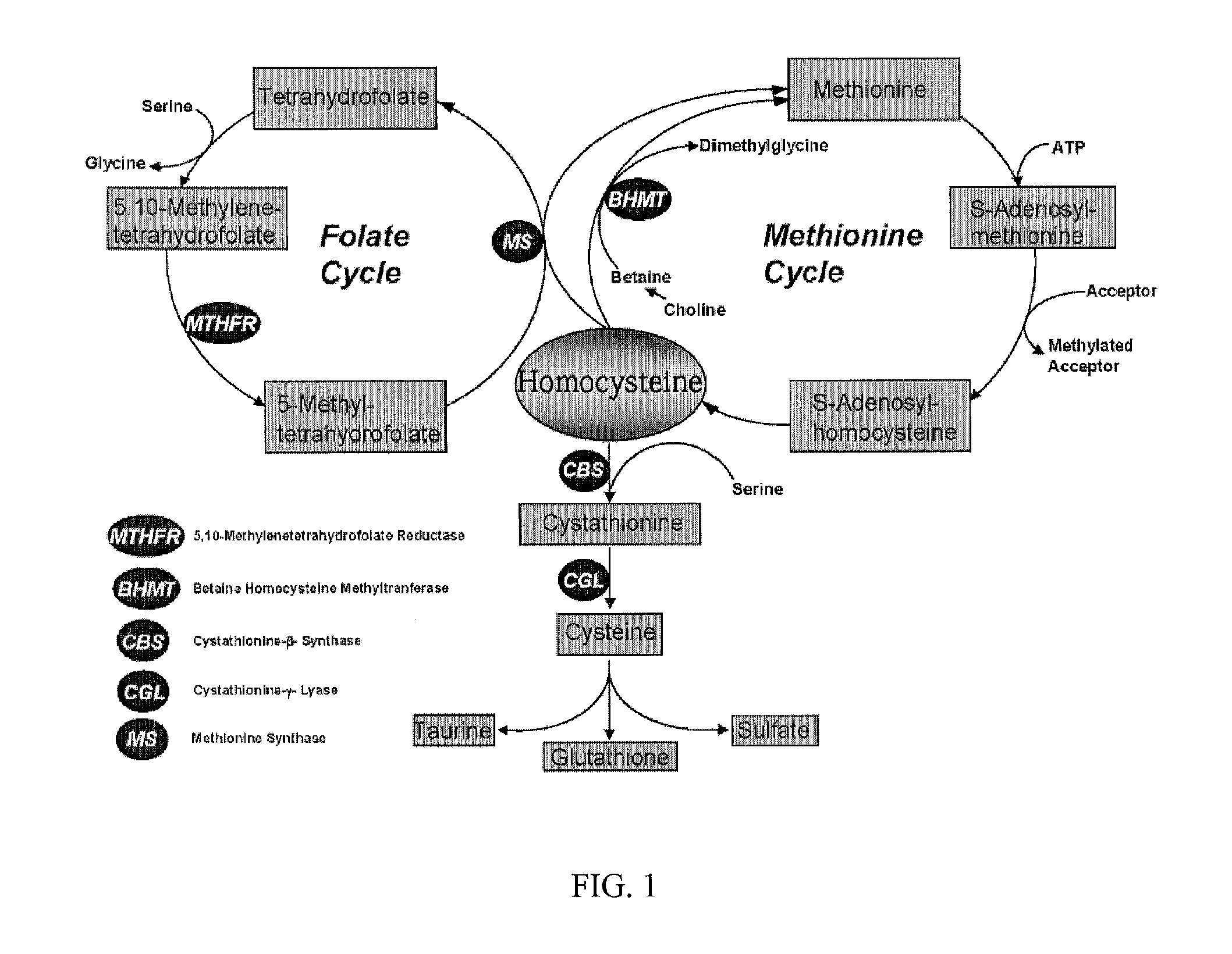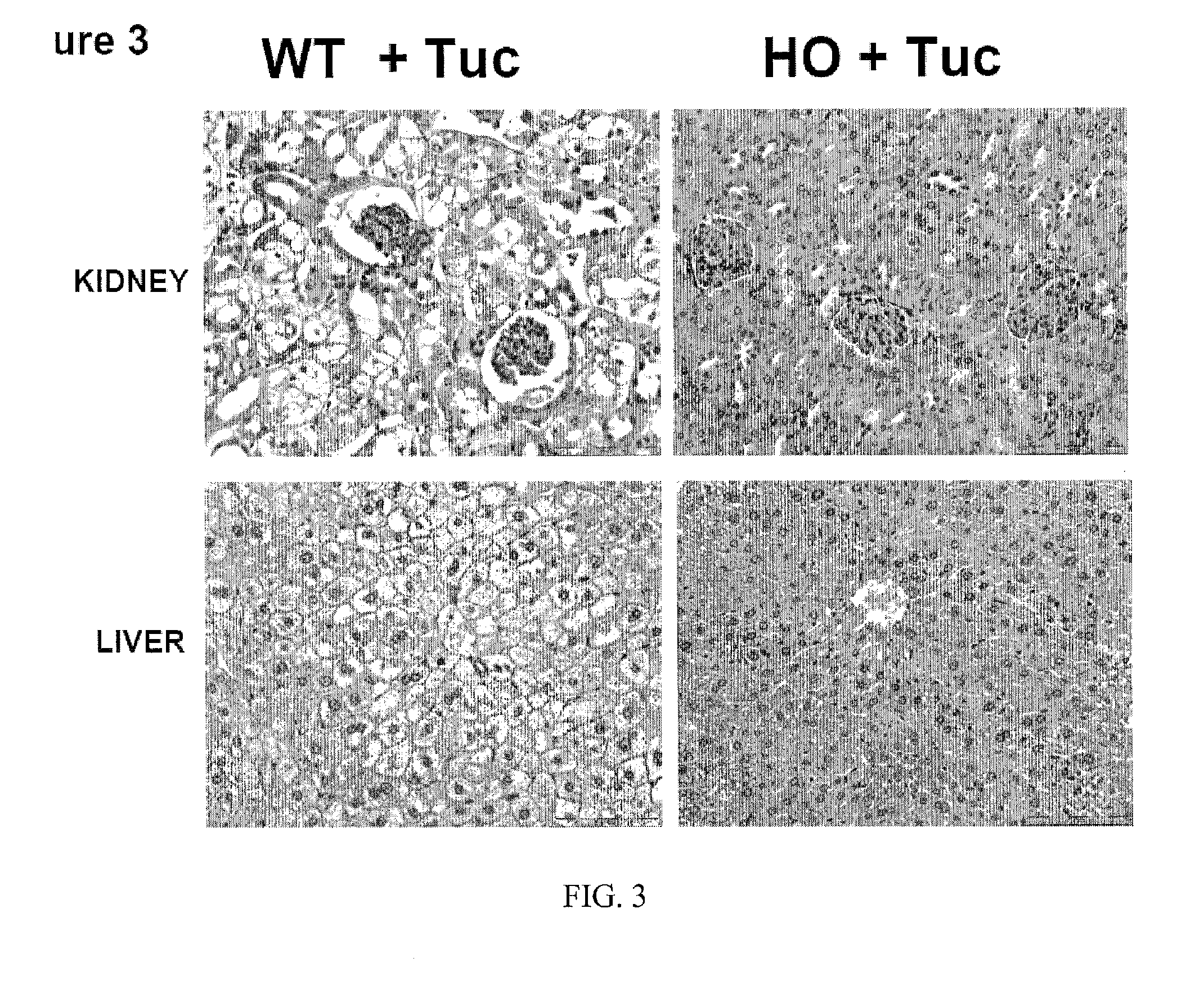Uses of and methods of treatment with cystathionine
a cystathionine and cysteine technology, applied in the field of cysteine use and treatment methods, can solve the problems of no known pharmaceutical treatment for either apoptotic tissue disease or neuroblastoma, and the ability of these organs to function properly, so as to reduce the development of toxin-induced liver and increase the efficacy of chemotherapeutic treatments.
- Summary
- Abstract
- Description
- Claims
- Application Information
AI Technical Summary
Benefits of technology
Problems solved by technology
Method used
Image
Examples
example i
Chemicals and Reagents
[0210]Unless otherwise stated, all chemicals were obtained from Sigma (St. Louis, Mo.). All reagents for mammalian tissue culture were obtained from Life Sciences Technologies (Rockville, Md.) except for fetal calf serum, which was obtained from HyClone (Logan, Utah).
example ii
Media and Mammalian Cell Culture
[0211]CBS and CGL positive HepG2 hepatocellular carcinoma cells and human embryonal kidney 293AD cells were obtained from the American Type Culture Collection (Manassas, Va.) and were cultured as described previously (6). CBS and CGL negative Chinese hamster fibroblast a23 cells were obtained from the University of Colorado Intellectual Developmental Disabilities Research Center central collection and were cultured as described previously (6).
example iii
Tunicamycin Treatment of Cultured Cells and Assessment of Cell Death
[0212]HepG2, 293AD and a23 cells were seeded in triplicate at ˜75% confluence and were pre-treated with either propargylglycine (PPG) (5 mM) or cystathionine (5 mM) in complete media (DMEM, 10% FBS). After 24 hours, fresh media with 1% FBS was added to each well. Cells were then further treated with tunicamycin (either 5 or 10 ug / ml) for 18 hr treatment. Cells were subsequently photographed under phase-contrast with a Zeiss Axiovert 25 microscope for evidence of dead floating cells. To quantify cell death the media supernatant was collected for LDH release assay using a kit from Roche Applied Science (Cat. No. 11 644 793 001) according to the manufacturer's standard protocol where cytotoxicity (%)=((experimental value-low control / (high control-low control))×100.
PUM
| Property | Measurement | Unit |
|---|---|---|
| Stress optical coefficient | aaaaa | aaaaa |
Abstract
Description
Claims
Application Information
 Login to View More
Login to View More - R&D
- Intellectual Property
- Life Sciences
- Materials
- Tech Scout
- Unparalleled Data Quality
- Higher Quality Content
- 60% Fewer Hallucinations
Browse by: Latest US Patents, China's latest patents, Technical Efficacy Thesaurus, Application Domain, Technology Topic, Popular Technical Reports.
© 2025 PatSnap. All rights reserved.Legal|Privacy policy|Modern Slavery Act Transparency Statement|Sitemap|About US| Contact US: help@patsnap.com



